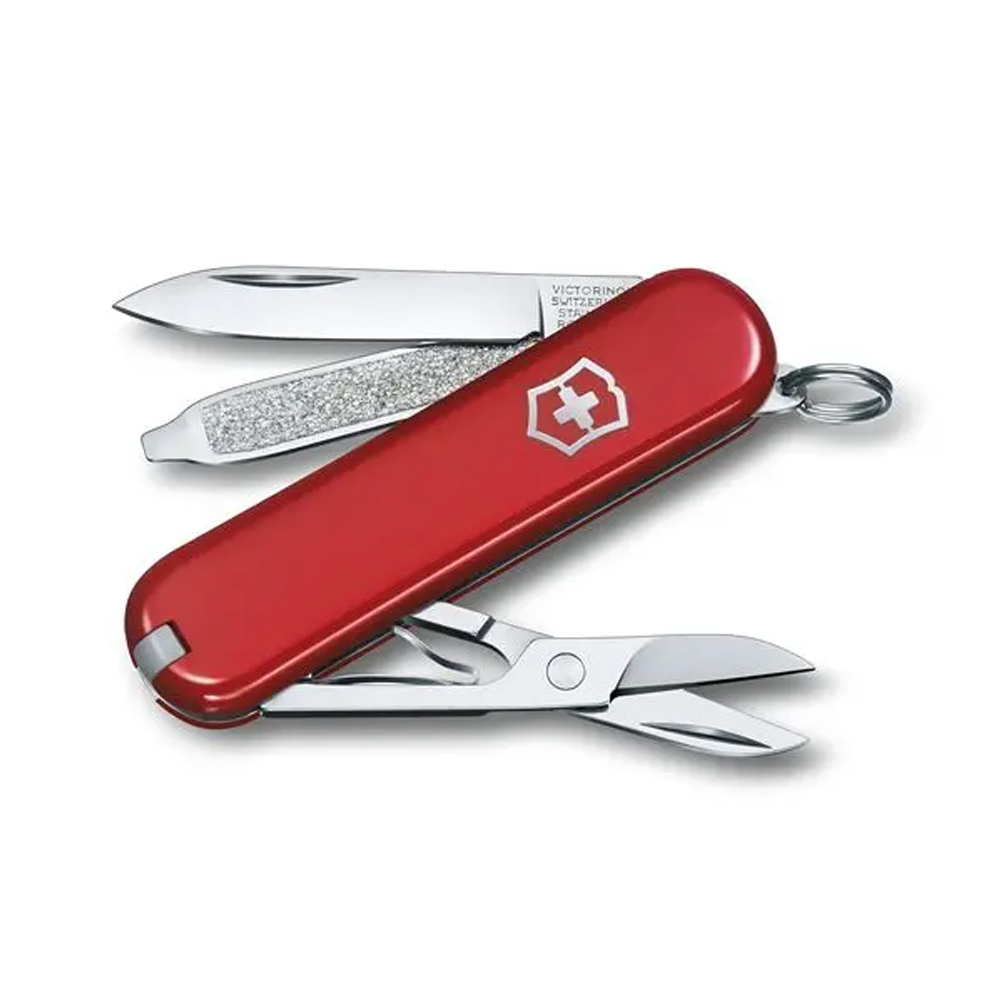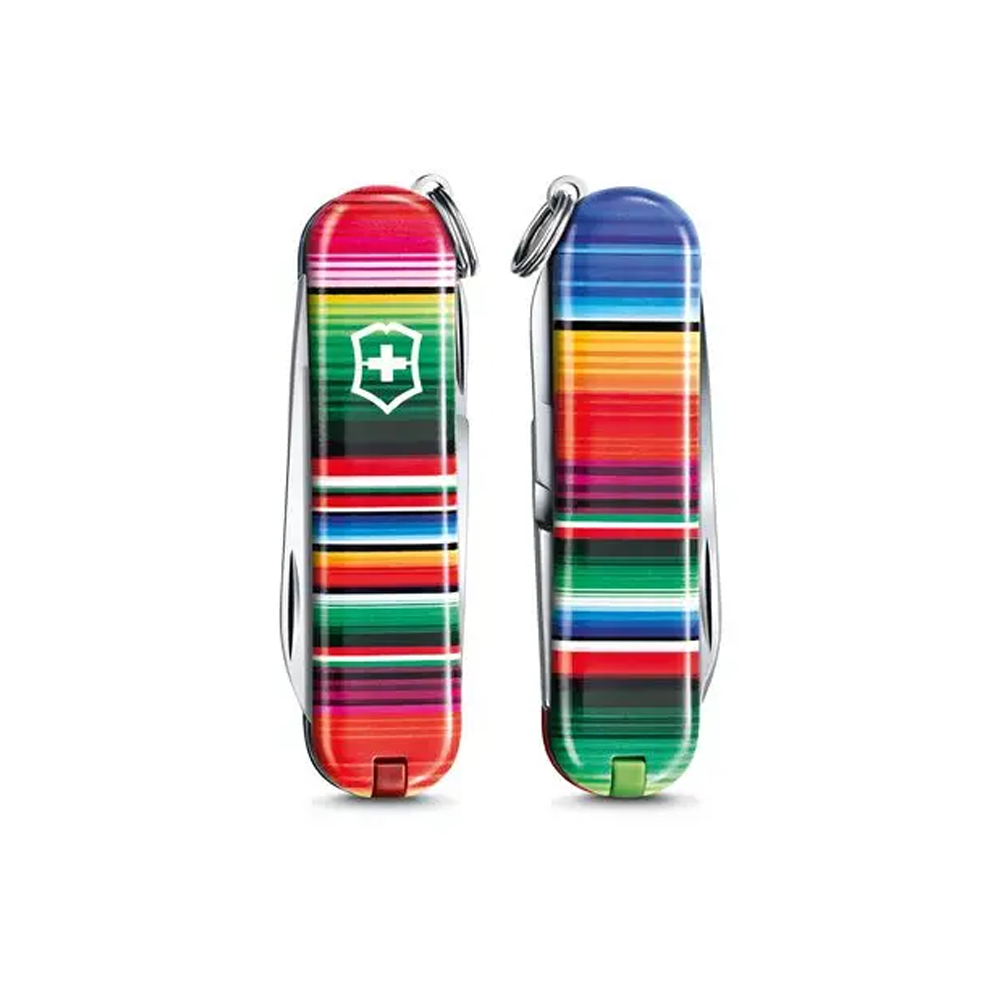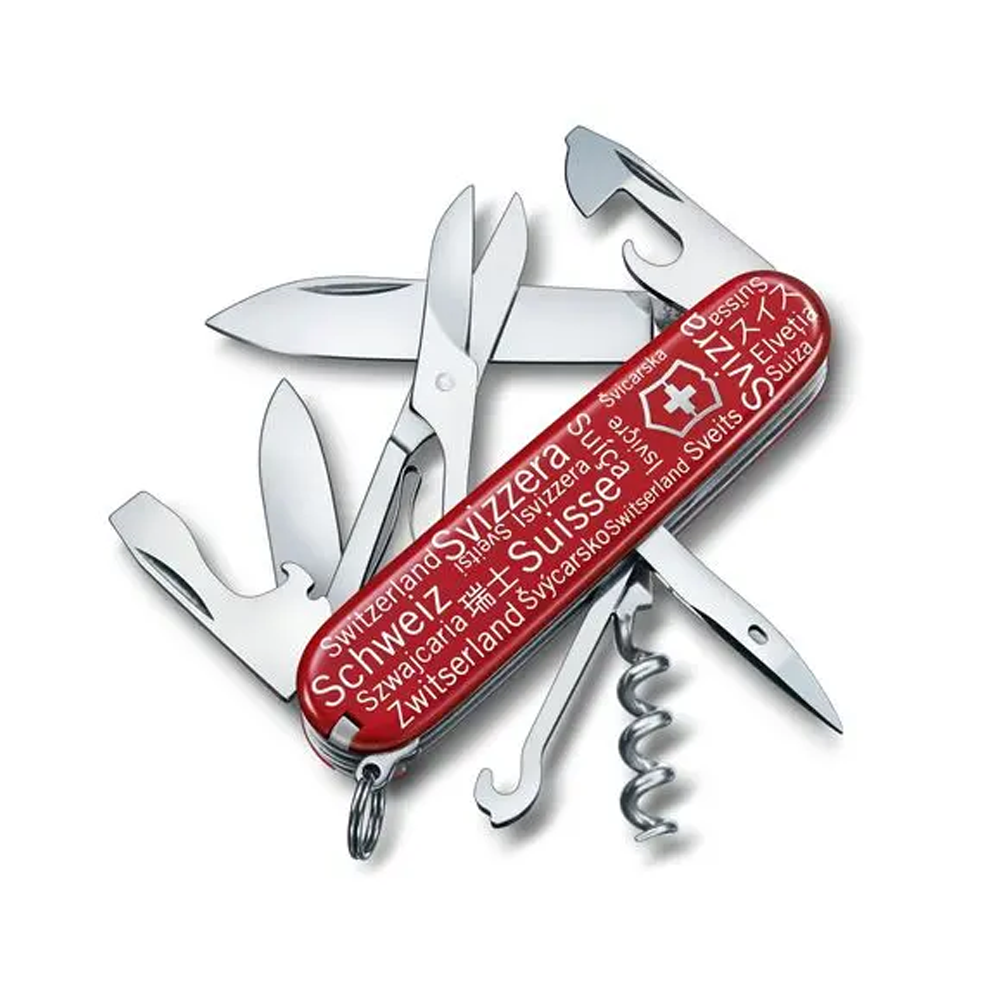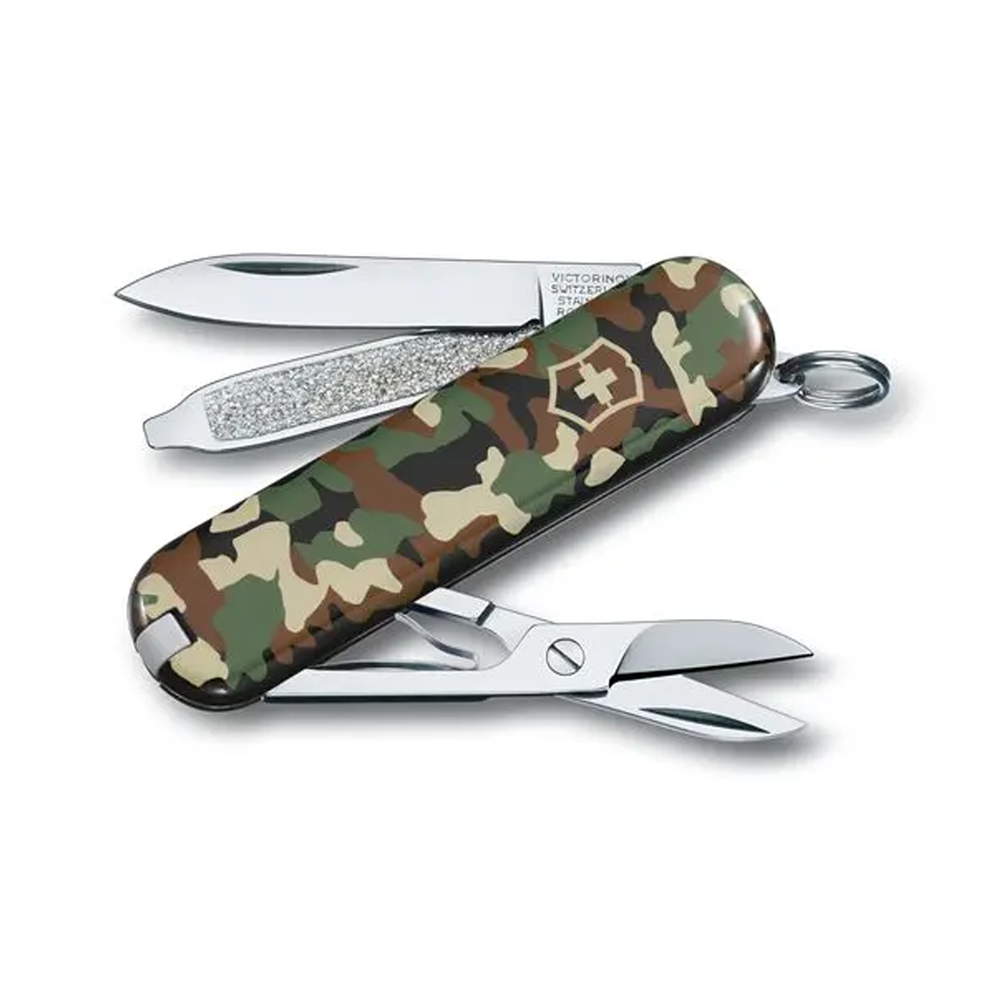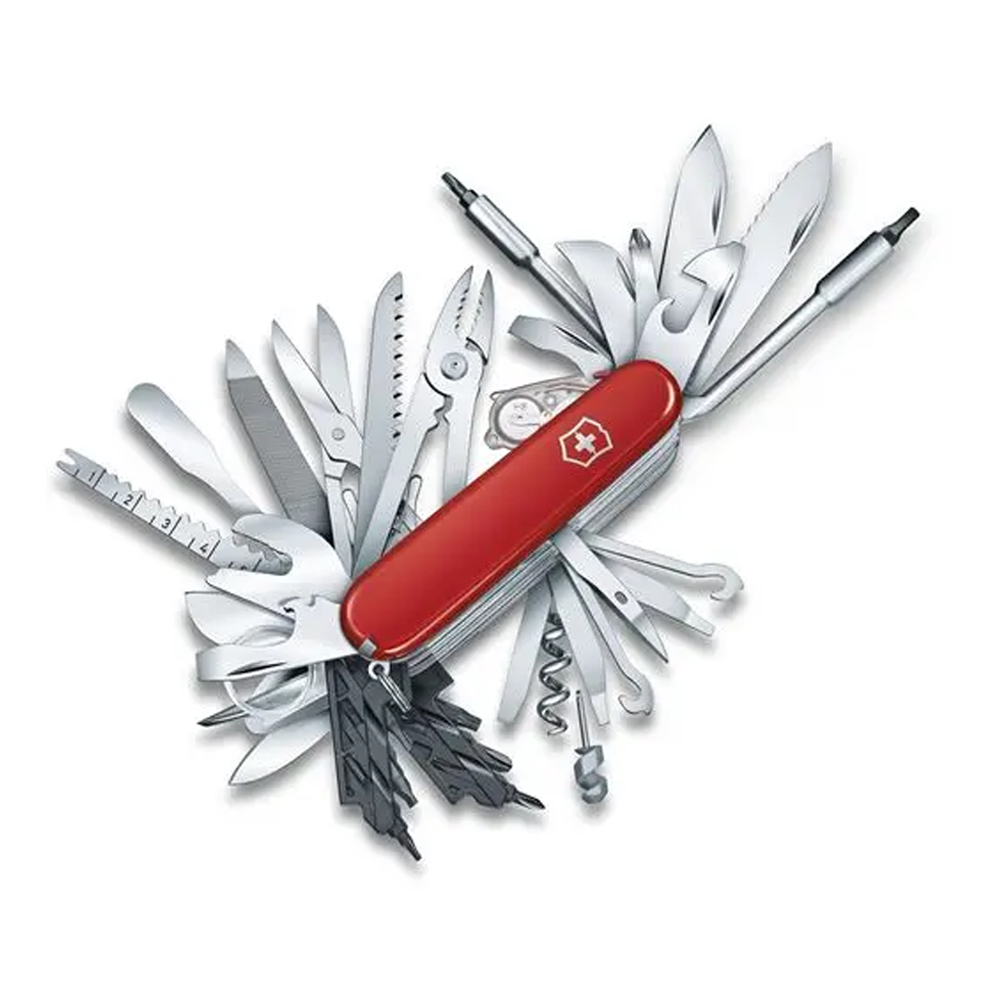If the history of cutting objects goes back to prehistoric man, the metal knife appeared during the Bronze Age. Since then, many variants, from bayonets to daggers to penknives and serpettes have emerged.
But to begin the epic of the Swiss Army knife, we have to jump through the centuries to stop in the second half of the 19th century. Why this precise period? At the end of the 1800s, the Swiss army was using the Vetterli rifle, for which the soldiers had a number of eponymous tools. With its replacement by the Schmidt-Rubin rifle in 1889, the need for tools to be carried at all times changed. At the same time, the food industry was also growing with the rapid development of canning, which made it possible to preserve and protect foodstuffs for longer. Together, these two issues led to a solution: the Swiss army needed to equip its troops with a versatile pocket knife, capable of opening cans and dismantling weapons.

The idea of a multifunctional tool already exists. In 1880, the German John S. Holler even made one with 100 different functions. It contained scissors, a corkscrew, a saw, various blades and even a revolver. Of course, the military model did not need to be so complete and therefore so heavy and cumbersome. Only four functions were basically needed by the troops: a short blade, a can opener, a flat screwdriver and a punch. All of this was enclosed between two wooden shells. Unfortunately, the Swiss industry was not in the best shape at that time and no manufacturer could accept such a large project with a production of 15,000 pieces. The order for the so-called Model 1890 therefore crossed the border and went to the German knife manufacturer Wester & Co. in Solingen. The evolution of the pocket knife could have taken place across the Rhine, but if we are talking about the Swiss knife today, it is because there was one man who wanted to change the course of history. His name is Karl Elsener. If he doesn’t mention anything, the name of his company, Victorinox, is surely a much more telling reference. But let’s not get ahead of ourselves.
The relay of Ibach
It was still 1890. Karl Elsener I, who had a small cutlery workshop in the canton of Schwyz, decided to join with his colleagues to create the Swiss Association of Master Cutlers. Together, they could make enough pieces to accept an order from the Swiss army! The industrialist therefore reworked the initial model by introducing an innovation that would be fundamental for all future pieces: the use of both sides of the handle thanks to an ingenious spring system. This novelty thus makes it possible to easily slip two additional tools between the two faces, a corkscrew and a small blade. Thus, in 1897, Karl Elsener registers his patent for his “Swiss officer’s and sports knife”. The story is launched.


Swiss officer’s knife
Not resting on his laurels, he worked constantly to modify and improve his military jewel, an example of Swiss precision and quality. For example, in 1921, he decided to use stainless steel for his knives, making them harder and more resistant to corrosion. This improvement also influenced the name of the company, completing the first name of the founder’s mother, Victoria, with this reference to metal, stainless steel. Victorinox was thus born. But the company did not remain in a monopoly position for long. Other brands, such as its great competitor Paul Boechat & Cie (yes, it is the one that will become Wenger & Co. in 1908), freely invites itself on this market. The competition was so fierce that the Swiss government had to intervene. It required the army to order from both companies at the same time! Side by side, the two companies manufactured the green or grey knife (the famous red one was reserved for civilians) distributed to all new recruits at the same time as their weapon, with the proud inscription KMV, Kriegsmaterialverwaltung, in other words the Intendance of the war material on the punch. To conclude this story of rivalry, the century-long feud was finally resolved in 2005. Victorinox bought Wenger. And in 2008, Victorinox postponed a new contract to continue supplying the Swiss Army with its Model 08. The story between the Swiss military and Victorinox is not about to end.
Le couteau de l’armée suisse
If the Swiss army has been able to appreciate the practicality of their pocket knife for years, it was not until the Second World War that it went up in the world. Eloquently named the Swiss Army Knife or SAK for those who know it well, it is gradually being introduced into the military corps of other countries. For example, it is also distributed within the armies of the United States, Germany and Malaysia. Even NASA astronauts use it. The Ibach gadget flies over our planet at stratospheric speed!

And beyond
You don’t have to be a soldier to have a pocket knife. The soldiers’ companion has long since become an international brand, accessible to all. “Those who are ready for any challenge always take it with them” as Victorinox says! And indeed, from American presidents to adventurous scootsmen, from Angus MacGyver in the McGyver series to Matt Damon’s character in Alone on Mars, Swiss blades are popular all over the world. In fact, it’s no surprise that Victorinox produced its 500 millionth original Swiss Army knife in 2017! To continue a little more on numbers: the classic models are assembled in just 3 minutes, while the current range consists of nearly 400 different pieces, which can be equipped with 80 different functions. Throughout its history, the Swiss Army Knife has constantly reinvented itself according to the needs of its users and the changes of its time. Thus, some knives are equipped with a USB key, a laser pointer, a small digital screen or are even made with recycled Nespresso capsules. But despite this diversity, the most sold is the Classic with its small blade, scissors, nail file, nail pick, toothpick, tweezers and finally its ring. Seven in all.
For the little anecdote, the maximum number of tools put on a piece of a limited collection is 87, thus regrouping a total of 140 functions. This industrial jewel weighs 1.4 kilograms! In terms of colors and textures, the choice has also diversified over time! If the red shell remains the great classic, the Swiss Army Knife can be declined to the limits of the imagination. And let’s not forget to mention the special editions that bloom much more often than the spring-summer and fall-winter haute-couture collections!

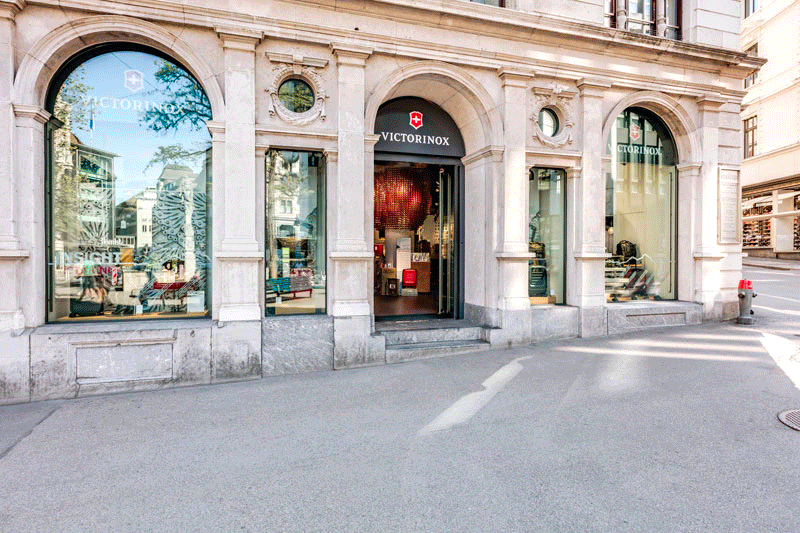
In 130 years of history, the small factory in Ibach has proudly stood among the greats, propelling its pocket knife to the top of its glory. An international reputation for these few Swiss Made centimeters. The challenge was far from won in 1891, but the Elsener family, still at the head of the company, has managed to make it evolve over the generations. From military instruments, Swiss knives have become true objects of desire and design, exhibited at the MoMA in New York, the Design Museum in London and the Neue Sammlung in Munich!
And even beyond the artistic sphere, the reputation is so important that one can even call a person a Swiss Army knife, touting their efficiency and versatility! Not all objects have an expression of their own!

